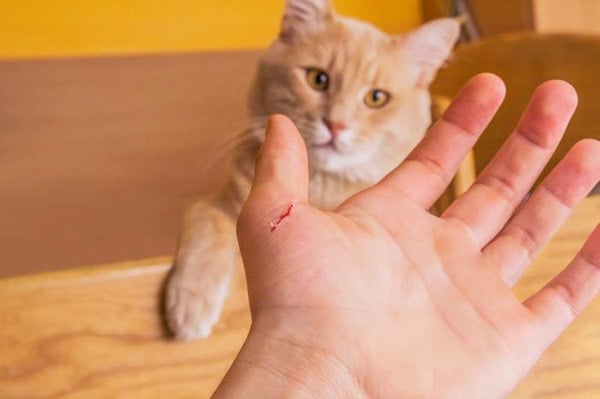Do you have a feline friend at home? Then you are at risk of having cat scratch disease. Also known as cat scratch fever and bartonella infection, it is usually nothing serious, provided that you have a strong immune system or a severe case of it is promptly treated with antibiotics.
There is really no need to give up your furry pal. By reading on, you will learn some vital details on cat scratch disease, such as what causes it and how you can keep yourself from having it.
Cause
Just like what the name says, cat scratch disease can be obtained from the scratch of a cat who is a carrier of bartonella henselae, which is one of the most common bacteria on the face of the planet, experts say.
However, it is very much possible for you to also get cat scratch disease from the bite of a carrier cat. You may also end up with it if the saliva of a domestic cat carrying bartonella henselae accidentally gets into a break in your skin or the whites of your eyes!
Cat Symptoms
Your cat may be carrying bartonella henselae without you knowing it because it usually causes no sign or symptom. Experts say that kittens are the likelier carriers, and they believe that those furry cuties can get the bacterium from a type of flea. The good news is cats tend carry bartonella henselae only for a short period of time.
Human Symptoms
If you have cat scratch disease, you will notice that the scratch or wound you have obtained from your feline pal is inflamed or has a blister on it. If it’s located near a lymph node, you may notice that the lymph node is swollen, which is something common during a bout of infection. Similarly, you may also experience other symptoms typical during an infection, such as fatigue, headaches and low-grade fever.
Experts say that the likes of sore throat, loss of appetite and weight loss are rarely encountered symptoms of cat scratch disease, but it is possible for them to strike.
Diagnosis
Usually, your doctor will make a diagnosis based on the cause of your complaints, as well as the accompanying signs and symptoms. Since cat scratch disease can be hard to detect based on the signs and symptoms alone, your doctor may request a specific type of laboratory exam to be done, which is indirect fluorescent antibody or IFA blood test.
Cat Treatment
A cat suspected to be a carrier of bartonella henselae requires no treatment. As mentioned earlier in this article, furry pals tend to carry them only for a short period of time. However, it is said that in very rare cases bartonella henselae can affect the heart of a cat, causing it to enlarge, as well as infect its other vital organs.
Human Treatment
Cat scratch disease is usually a non-serious problem. In fact, you may have it and require absolutely no medical treatment at all, allowing the infection to simply run its natural course.
However, those whose immune systems are weakened may be prescribed with antibiotics as the body’s own defense mechanism is incapable of controlling the infection brought about by bartonella henselae. Affected kids may also have to take antibiotics as their immune systems may not be that strong yet to suppress the infection.
Prevention
Although cat scratch disease is not a major health concern most of the time, it’s still very important to keep it from happening. Luckily, keeping cat scratch disease away is an easy matter.
Limiting contact with cats is the initial step to take. If you own a cat, keep it indoors and ask your trusted vet to prescribe or administer flea medication. Definitely, you can avoid having rough play with your feline pet in order to save yourself from being accidentally getting scratched or bitten.
